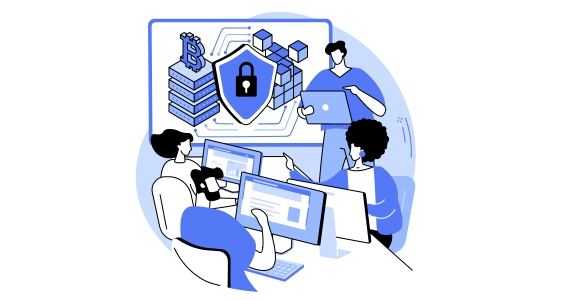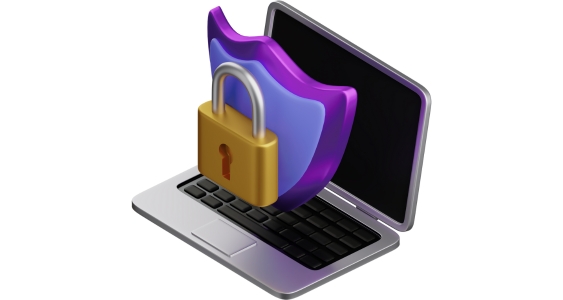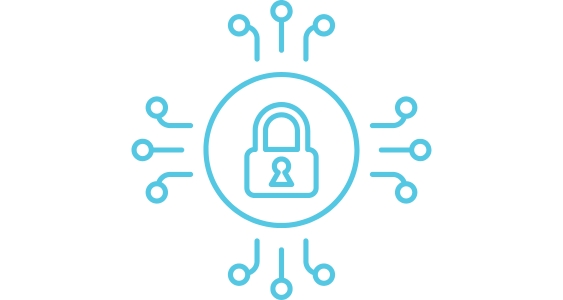As the global economy increasingly relies on interconnected technologies, cyber threats pose significant risks ranging from service disruptions to substantial financial damages. With phishing scams and ransomware attacks constantly evolving, companies must prioritize robust cybersecurity policies shielding critical assets and sensitive customer data.
Implementing mandatory employee training establishes the first line of defense against daily hazards in an ultra-connected world. Comprehensive programs addressing real-life simulated threats equip workforces with skills to combat modern tech traps. Beyond bolstering technical safeguards, informed security-minded staff significantly strengthen safety nets, reducing successful infiltration attempts.
Why Cybersecurity Training is Crucial for Businesses
Ongoing cyber security training addressing potential vulnerabilities, the latest scams, and proper protocols enables employees to make smarter decisions and safeguard systems. Staff actions often unintentionally trigger breaches by downloading malware or accessing unauthorized programs carelessly. Dedicating resources to developing cybersecurity skills directly correlates to lower breach occurrences and faster threat detection.

Reduced Risk of Cyberattacks
Through awareness of common social engineering techniques, staffers grow savvier in identifying risks. Simulation training reinforces secure practices, cementing instinctual responses and combating criminally engineered schemes that attempt to coerce access credentials or permissions. Skilled staff who spot red flags early can prevent many infiltration attempts from succeeding.
Enhanced Data Security
Strengthening password protocols while heightening sensitivity around accessing internal databases protects confidentiality restricting exposure. Clearly delineating data authorization procedures reduces the temptation toward unauthorized usage or accidental mishandling among curious personnel lacking context on classification levels. Clear policies increase accountability demanding need-to-know handling.
Improved Compliance
Many industries requiring strict data protection levy hefty fines related to non-compliance with information security standards. Missed software patches or outdated server protocols frequently trigger violations, resulting in costly audits and legal consequences. Proper training ensures employees implement mandated system upgrades, retention policies, and access controls appropriately. Adhering to regulations protects the organization on multiple fronts.
Boosted Employee Confidence
Arming personnel with tactical skills and best practices calms nerves for those facing unfamiliar security demands involving highly sensitive materials or privacy regulations. Step-by-step training guides, including clear instructions on safe information exchange, encryption, or enforcing privacy controls, reduce uncertainties. Confidence compliance inspires efficiency.
Reduced Downtime
According to 2022 FBI data, a business falls victim to a ransomware attack every 14 seconds, with damages costing billions annually. Swift response protocols learned through emergency response simulations minimize disruption and speed recovery saving money. Practiced protocols implemented swiftly following an attempted breach attempt to contain the threat faster.
While no amount of cyber security training guarantees 100% protection in an increasingly interconnected world facing tenacious cybercriminals armed with rapidly evolving tools, informed preparative measures significantly limit vulnerabilities. Just as armies drill before battles, cybersecurity training conditions workforces to navigate turbulent threats.
Types of Cybersecurity Training
Cyber security training ranges from basic digital hygiene skills for all staff to highly technical certifications demanded within IT security roles. Tailored programs should address company-specific assets, protocols, and past incidents. Training needs vary based on business models, data sensitivity, and employee responsibilities but often include some universal foundations.

Awareness Training
Foundational cybersecurity awareness provides broad best practices for protecting systems applicable across organizations. Reviewing password protocols, email security principles, and safe web browsing habits equips everyday staff to avoid basic infiltration schemes that attempt to leverage human error. Annual refreshers combat gradually loosening diligence.
Phishing Simulations
Mock phishing emails sent internally test workforce susceptibility gauging perceptual weaknesses. Click tracking helps gauge naive habits, so additional coaching targets frequent offenders by recalibrating responses to better identify suspicious messages. Up to 30% of staffers still click suspicious email links, reinforcing why consistent skills testing is invaluable.
Social Engineering Techniques
Sophisticated cybercriminals leverage insidious psychological mind games to manipulate unassuming personnel into handing over access. Case studies on common tactics raise the consciousness of schemes attempting to exploit empathy or urgency to bypass security procedures. Understanding manipulation makes employees less likely to comply with suspicious requests.
Password Management
Reinforcing password complexity requirements, prompting routine updates, and enabling two-factor authentication boosts account security significantly, shrinking opportunities for hackers to guess or steal credentials. Detailed training should guide the creation of passphrases, mixing random strings of upper and lowercase letters with multiple symbols and numbers for maximum safety.
Secure Browsing Practices
Typically, 80% of malware infections stem from contaminated websites. Lessons devoted exclusively to risks associated with downloading foreign programs or files, identifying HTTPS browser prefixes, and avoiding site cookies heighten staff vigilance, shielding corporate assets from attack vectors. Extra malware prevention tactics provide added instructions for securing endpoints.
Mobile Device Security
With a rising remote workforce relying on mobile devices, extra attention on proper protections combats heightened vulnerabilities. Specific instructions on utilizing VPN connections, risks with public hotspots, and enabling device encryption improve remote work safety for an increasingly decentralized workspace exposed to online infiltrators.
Incident Response
An emergency scenario run-through prepares response teams to swiftly neutralize ongoing attacks while minimizing disrupted services that plague victims. Quick identification, containment, and incident investigation protocols practiced via situational simulations make professionals steady leaders if disasters strike. Chaos containment depends on this.
While individual lessons build skills combating specific hazards, layered defenses weave a cohesive web required for robust cyber resilience. Annual refreshers ensure comprehension sticks reinforce retained safety habits.
Delivery Methods for Cybersecurity Training
Various delivery formats catering to diverse learning styles keep cyber security training accessible, retainable, and effective for upskilling large workforces across skill levels and departments over time. Layering educational techniques expands the reach and appeal.

Online Courses
Scalable e-learning modules enable customized curriculums allowing broad delivery despite limited budgets. Refreshable content adapts to evolving hazards using multimedia engagement tools. Testing comprehension retention cements lessons for the long run.
In-Person Workshops
Small group workshops delivered by seasoned subject matter experts personalize learning, providing opportunities to address unique needs or concerns. Hands-on labs enable situational application studies, offering immersive learning and applying concepts to tangible scenarios like fishing schemes. Teaching assistants provide real-time feedback.
Microlearning
Bite-sized daily cybersecurity refreshers feature fast fact tidbits or anecdotal stories on relevant threats, keeping lessons at the top of my mind all year versus cramming concepts annually. Quizzes round out modules that provide talking points and cement long-term recollection. Short bursts suit limited attention spans.
Gamification
Video simulations framing cybersecurity concepts using game elements spark behavioral improvements, making threat avoidance instinctual. Rewards recognize they achieved milestones such as multiple quarters without a successful phishing hit, maintaining leaderboard excitement, and keeping skills primed through friendly competition. These games incentivize winning techniques.
While varied techniques resonate differently across unique populations, layering methodologies amid groups connects with a broader spectrum, empowering widespread adoption of safety practices companywide. Testing and metrics steer strategies to achieve maximum impact over time. Holistic proficiency demands exploring multimodal means.
Benefits of Implementing a Comprehensive Cybersecurity Training Program
Allocated efforts toward fortifying human firewalls deliver immense value, given that technological tools alone cannot combat increasing social engineering ploys to manipulate access. Studies directly correlate security knowledge levels with data breach reduction. Other benefits beyond threat avoidance also emerge, strengthening business operations.

Cost Savings
With global ransomware damages projected to cost $265 billion by 2031, investments in strengthening defenses deliver substantial long-term cost avoidance, given few businesses can fully recover following an attack. Average expenditure exceeds $1.4 million per episode. Comparatively, comprehensive training costs just $15 per learner, delivering over 6,000% return, negating potential damages.
Enhanced Productivity
Smooth business operations rely on 24-hour data accessibility and integrity. Successful attacks grind productivity to painful halts. Even minor infiltrations often discourage customer and partner trust, stifling collaborative initiatives—effective training curbs interference and trusted relationships, fueling faster results and responsive reputations.
Improved Employee Morale
Feeling helpless amidst cybersecurity threats breeds unease and erodes workplace satisfaction. Confidence cultivated through preparedness programs switches attitudes from overwhelmed to empowered by arming personnel with tactical skills to defend the digital terrain. Calm confidence boosts morale, which directly strengthens performance.
Stronger Security Culture
Organizations repeatedly falling victim to cybercrimes often suffer from lax security cultures and lackadaisical attitudes toward vigilance. Consistent training focused on cultivating shared responsibility for protection promotes more conscious organizational cultures, decreases response times, and unifies all stakeholders around shared data values.
Competitive Advantage
With data emerging as one of the global economy’s most valued assets, financial institutions and technology firms now select partners based partially on cyber risk profiles as breaches spawn exponential damages. Companies demonstrating stellar training programs face fewer customer-imposed audits and benefit from preferred partner status, earning additional revenue streams.
Proactive cybersecurity training requirements also strengthen employer brands, attracting top technical talent who value working for industry leaders and implementing state-of-the-art standards to protect intellectual property. Skilled staff committed to excellence flock to safety-focused employers.
Conclusion
Rising reliance on integrated technology ecosystems substantially escalated risks associated with sly cyberattacks threatening enterprise stability and continuity.
Beyond bolstering firewalls, implementing comprehensive staff education addressing both deeply technical and non-technical facets of cybersecurity greatly reduces an organization’s vulnerability to devastating infiltration.
See Also: Guide to Cyber Resilience in the JD Edwards EnterpriseOne Ecosystem










